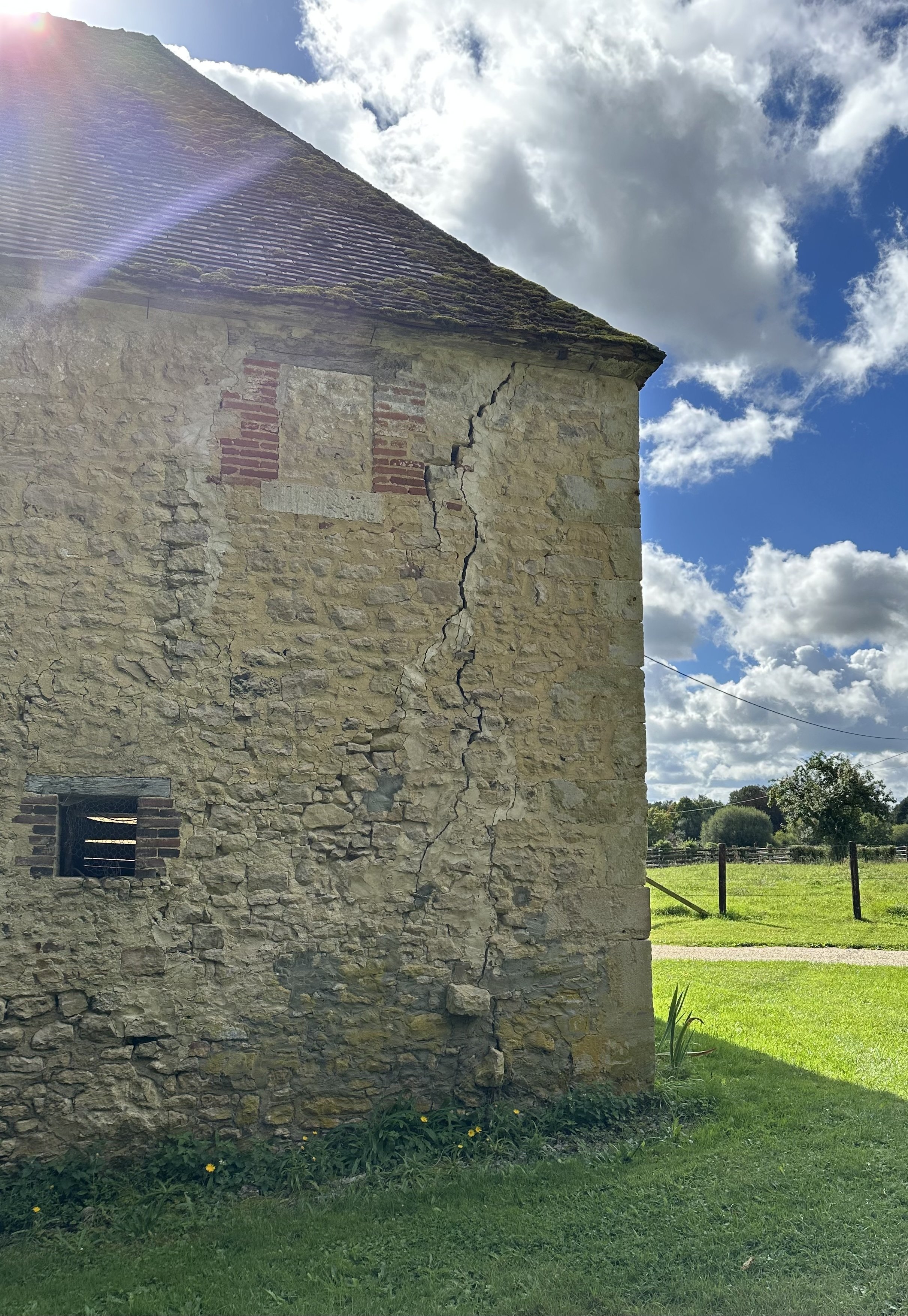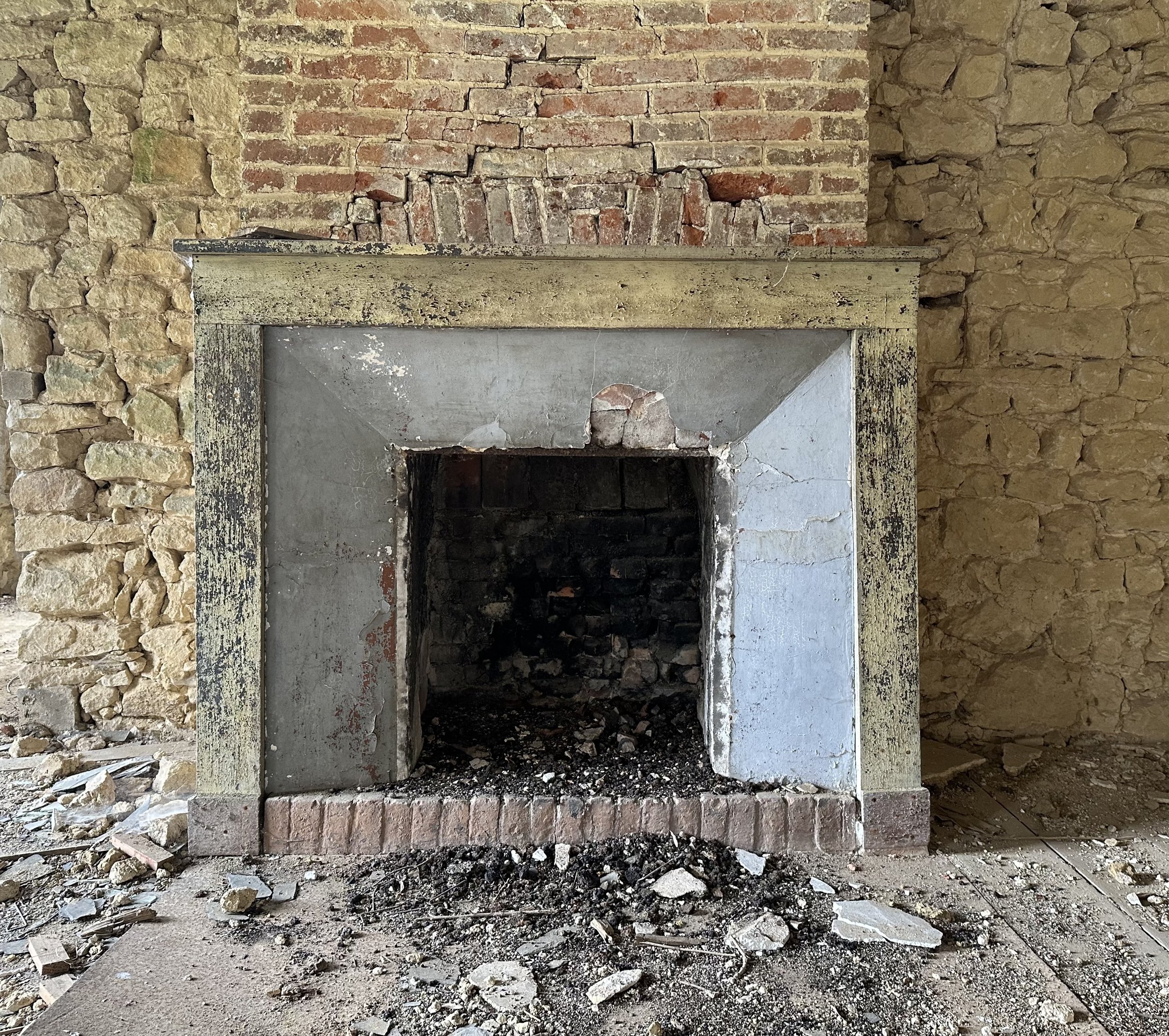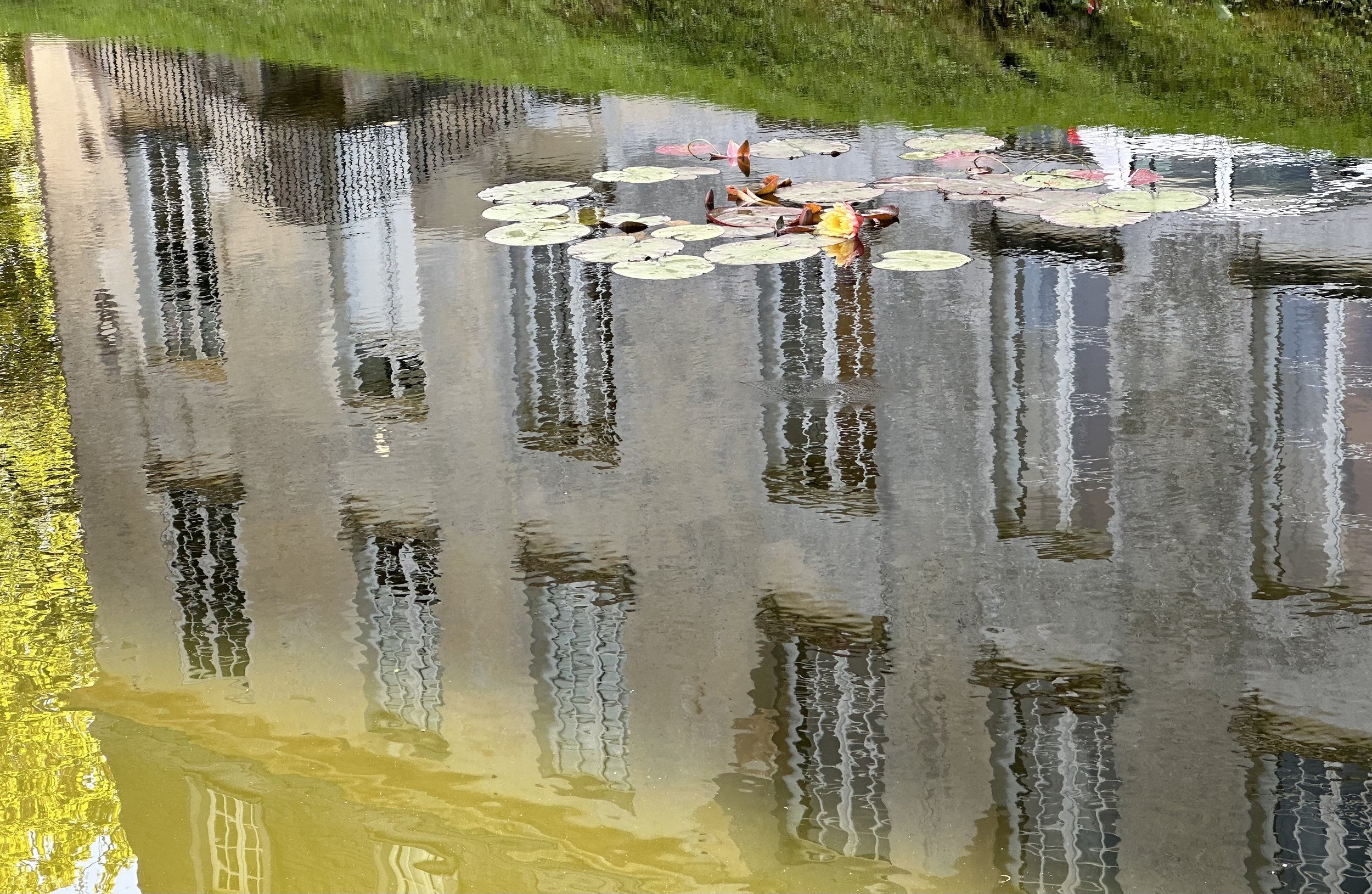New projects for Fall
Sunday, November 3, 2024
Dear Valued Customer,
Summer fled away in a final flurry of rain. Autumn began with its customary showers. And today, I am delighted to report, the sun shines once again, as it did in halcyon August days. It is the weekend of La Fête de la Toussaint, the Feast of All Souls.
The rentrée is well underway. School began the first week of September. In swathes of Brittany and along the Normandy coast, in St Jean de Luz and Cap Ferret, in Provence and up in the mountains of Savoy and the Basque country, the lively summer life was stilled.
All over France, les estivans – the summer folk – went back to city life, to the metropolises of Paris, Marseilles, Lyon and Lille. Shops and restaurants opened again. The pavements rang with leather-soled chaussures de ville. Impatient drivers claxonnaient.
Here at Courtomer, on the other hand, we followed a different rhythm. After the intense activity of harvest, from bringing in the June hay to the moissons of July and the replanting of rapeseed in mid-August, the countryside sank into a weary and welcome torpor. We waited for the last calves to be born. And for the weather to be dry enough to bring in the dusky stalks of feed corn.
And it wasn’t just the farmers who took a pause in those shortening days of late summer, while schoolchildren and their parents packed up their bags, when urban restaurateurs lit their hobs and shopkeepers flipped over the open signs.
In the countryside, no artisan would respond to a phone call. Emails remained unanswered. The final touches to the “petite maison du haras,” the Gatehouse, remained en suspense.
At the Loge, the dwelling of our new gardien and his wife, a new poêle for heating the entire house sat in the middle of the living room like an unwelcome and supersized guest. Mysterious wires trailed from the circuit box. Meanwhile, a violent late-summer tempête had poured rain down around the flashing of their chimney, causing new floorboards in the bedroom to rise up like a mountain range en miniature.
Nothing was to be done! One team of workmen had gone home to Poland. The others were simply en vacances.
And it wasn’t only the French vacation ethic and the homing instincts of the Polish that slowed down progress. The hanging lamps ordered for the kitchen of the little Gatehouse languished on a ship in the Mer Rouge – incidental victims, or so it was recounted, of war in the Middle East.
But around the second week of September, the white vans began rolling up the driveway. Monsieur and I stood at the kitchen window, watching in joyful relief as the fleet rounded the moat.
Monsieur Laurent, bronzed and rested, leapt from his car with his characteristic energy and a thousand ideas for embellishing la propriété. The lamps were still stranded. But he was ready to take on our next project. And to plan out the one after that.
From Monsieur Frédéric’s camionette descended two roofers. They hastened up a ladder and began to repair the flashing around the chimney of the Loge.
Monsieur Bruno, the mason, came to inspect the four à pain and its cracked foundation.
The actual four, the bread oven, is not in bad shape. A few bricks have come loose from its curved dome and fallen onto the stone sole, or base. This is nothing, says our mason. A dollop of lime mortar and hop! But the building in which the old bread oven is housed had been repurposed into a pigsty. This must have happened at about the time that rural France discovered steel beams and concrete. In the years following World War II, after the French and especially Normans had witnessed German blockhouses and American landing barges, these new technologies were adopted with often blind enthusiasm.
Two large openings, like big picture windows, had been cut into the wall on either side of the door. This allowed sunlight to shine on the little piglets. Unfortunately, the steel lintels put in above the new windows were cut too short to carry the full weight of the wall and the roof above. Meanwhile, as the wall and the stone foundation began to fail, they were patched and shored up with concrete. Concrete, explained Monsieur Bruno, shaking his head in regret, starves brick and stone of the air they need to breathe. This lack of respiration causes decay. Water becomes trapped in the walls. It leaches the lime out of the ancient mortar, leaving nothing but crumbling sand.
Bricks fall. Stones roll apart.
Also, he commented, taking out his knife and jabbing the wood around the windows, trapped water causes wood to rot.
“I will begin to repair in January,” he said.
But Monsieur Bruno was back just a week later. A large crack has developed in the west wall of the grange that is attached to our Farmhouse.
An alarming crack has opened up on the wall of the grange. Les artisans -- our roofer and our mason -- are on the case.
“Encore ce beton,” he sighed. Concrete again.
Or else it was the roof. A long, jagged crack extends from the top of the wall almost to the ground.
Last winter, I had asked Monsieur Frédéric to sweep off the moss growing on the roof of the grange. Moss, we have learned, is the enemy of tile and slate. Moss sends its hair-like rhizoids into tiny cracks and holes in the surface. Water seeps in, freezing, thawing and eventually breaking the tiles apart. Rain and melting snow slip through, soaking wooden rafters and rusting les clous.
Our roofer had shaken his head. He didn’t want to sweep the moss too firmly.
He beckoned me into the grange and pointed to the underside of the roof. I had already noticed that the massive beams that once spanned the short sides of the structure were missing. Someone had sawn them off neatly well before we had come to Courtomer.
“Pas grave,” said Monsieur Frédéric, reassuringly. The beams had probably gotten in the way of modern farm machinery and the big hay bales that could now be stacked up to the roof rafters. In the past, the beams supported the grenier, the loft where the grain harvest was stored. But now, the grain went into the silos of the coopérative up in the bourg of Courtomer.
More grave, the liteaux, the thin wooden slats upon which the tiles are nailed, had slid down or twisted sideways Several tiles were already askew. Through them shone pinpoints of blue sky.
“But you don’t have to repair this roof right away,” Monsieur Frédéric had consoled me. Gingerly, he and his équipe had dusted the moss off the old clay tiles.
Now, Monsieur Bruno and I peered up at the roof again. We stood at the end of the grange, where the big crack was visible inside the wall as well. Above a stone manger, motes of dust swirled in a shaft of light. Sure enough, there was a big hole in the corner of the roof.
It seems our charpentier will have another winter project at Courtomer. Meanwhile, Monsieur Bruno plans to bolt the cracked wall together and attach it to the oak frame of one of the windows.
“Hmm,” commented Monsieur when I reported these findings. “That must be a strong window. Affaire à suivre!”
There will be many more projects to follow in the coming months.
Monsieur Laurent has already shown me plans for a new farm office in the haras. This will be built into a space that was probably once used for carriages. The last comte of Courtomer transformed it into box stalls for his broodmares. These stalls are marvels of concrete construction, still as strong and solid as the day they were finished, with impeccably smooth walls and a raked floor. But thanks to the comte and his mason of yore, we have plenty of other concrete box stalls in the haras at Courtomer. And our horses, at least for now, are few and living elsewhere.
There is also the “fleuriste” to renovate. This is the handsome two-story house where Monsieur le Comte’s chauffeur and his family once lived. It is on the other side of the great cour d’entrée to the Chateau. It looks into the walled garden of the Orangerie, hence its name, “the flower house.”
Back in the 17th and 18th centuries, Monsieur Laurent is quite sure, the Fleuriste was a “maison d’officiers,” an officers’ quarters. A nobleman like the Marquis de Courtomer needed to house his personal retinue of armed guards as well as visiting officers of the Crown. The symmetry of the large windows, the door openings well-trimmed out in stone could not have been destined for les doméstiques, he assures me.
“It’s just going to be a “maison d’été,” I reminded Monsieur Laurent, attempting to restrain his expansive vision. “A summer house!”
Before we came to Courtomer, the roof of the Fleuriste had all but caved in and most of the windows were missing or rotten. We rebuilt the roof and replaced all the slates. A local carpenter, son of neighbors in Courtomer, salvaged what he could of the windows and closed the other openings with sheets of plywood. Having protected the building from further ravages of wind, water and wild animals, we turned our attention to more pressing matters.
But Monsieur Laurent is already talking about installing a new type of heating system, the new-fangled “pompe à chaleur,” or heat pump. And we can insulate the walls with chanvre and chaux – hemp and lime – the old-fashioned way. He pokes and prods the giant, carved beams that crashed down long ago and still lie prone on the earthen floor. He is pretty sure that under the dirt we will find medieval paving stones.
I’m not so sure. The old comte had a habit of selling off ancient building materials. It was his way of financing concrete box stalls. That was probably what had happened to the beams in the grange.
I left Monsieur Laurent pondering the noble past of our venerable Fleuriste.
Much work to be done to restore the Fleuriste, the "flower house" overlooking the walled garden, to its former glory as officers' quarters. This photo shows a bedroom on the 1er étage -- the second floor -- with its fireplace and wide plank floor.
Monsieur Martyn was waiting to talk over new plantations of trees and a dramatic hedge leading to the walled garden.
Our gardener, unlike the other artisans, has not taken a vacation. All summer and into early autumn, he keeps a restless eye on the handyman who comes to mow the lawns. The whips of trees and shrubs he has lovingly dug into the landscape have more than once been casualties of lawnmower blades. And there are the waterlilies in the moats to watch over. Devoured last year by ragondin, a family of water rats, two of our plants recovered and have begun to bloom again.
Finally, salutary visits from artisans wrapped up and garden plans reviewed, Monsieur and I turned our minds to another type of affair entirely.
We packed our bags.
Our youngest son was to be married on the other side of the pond…and so, after a quick trip to Paris where our daughter took me shopping for a new dress, we departed Courtomer in the month of October, taking the ferry to Ireland and flying from Dublin to the East Coast.
From far away, Monsieur Tony sent us the photograph above of the first frost. Like a delicate ghost of the Toussaint, the dandelion gleams white above the drooping autumn grass.
Amicalement,
Please click here to forward this email to a friend,
Renting Chateau de Courtomer: We are taking bookings for 2025 and 2026 for the Chateau and the Farmhouse.The Gatehouse is also ready for guests. The Orangerie may be rented for dinners, seminars, and other events.
English and French spoken. Concierge services available.
Heather (info@chateaudecourtomer.com and +33 (0) 6 49 12 87 98) will be delighted to help you with your enquiries and dates, and to preview the property on site.




